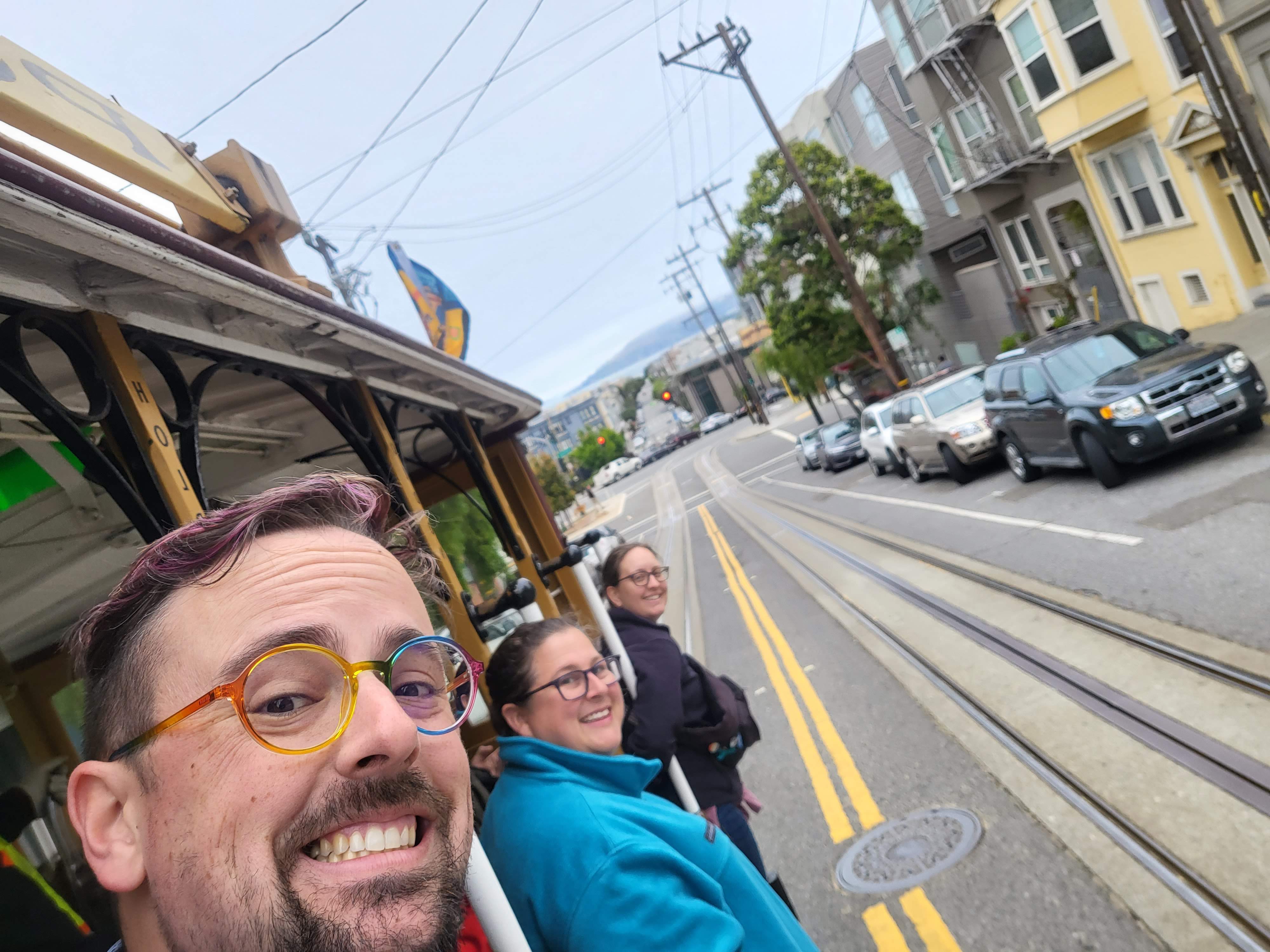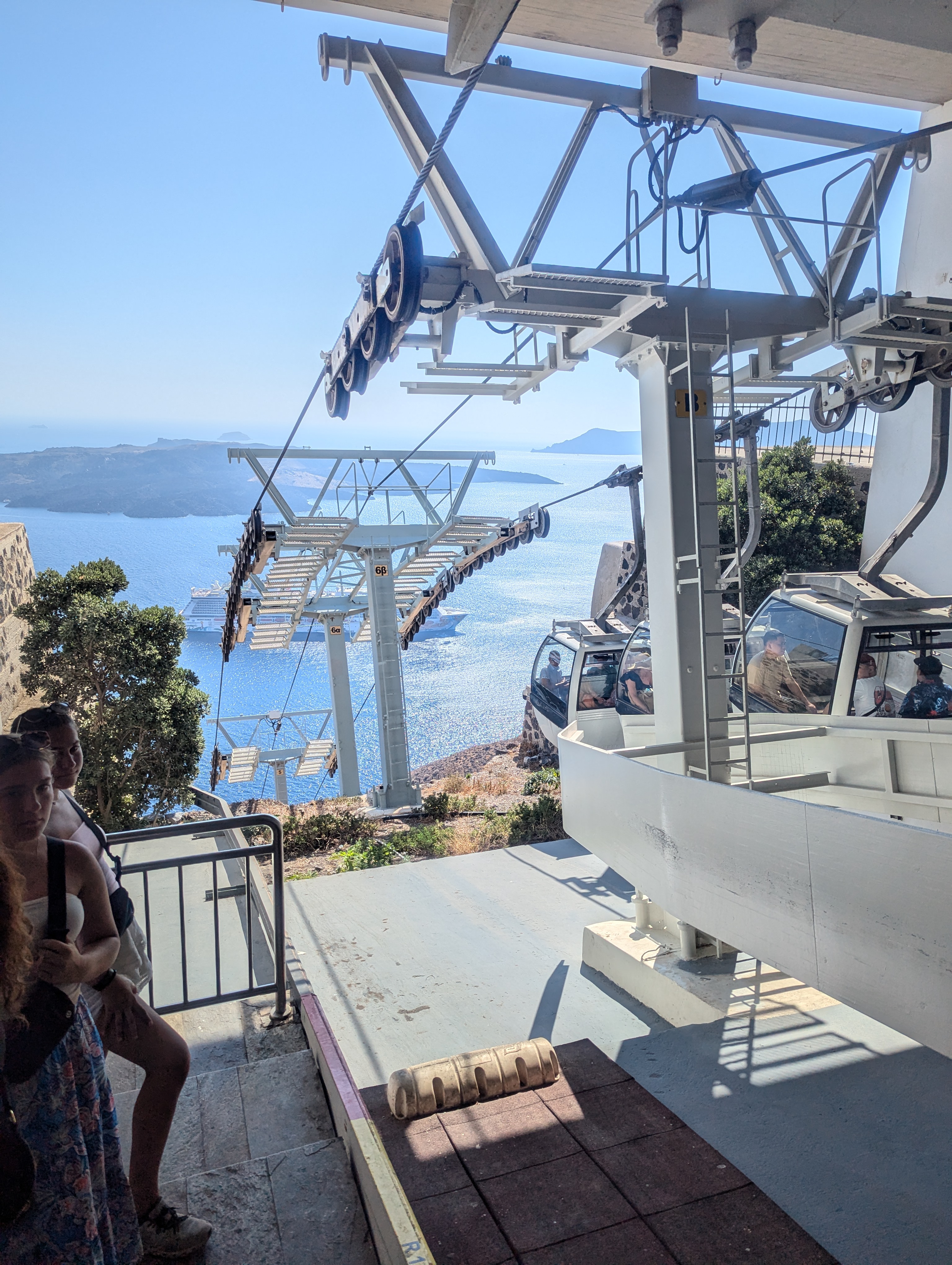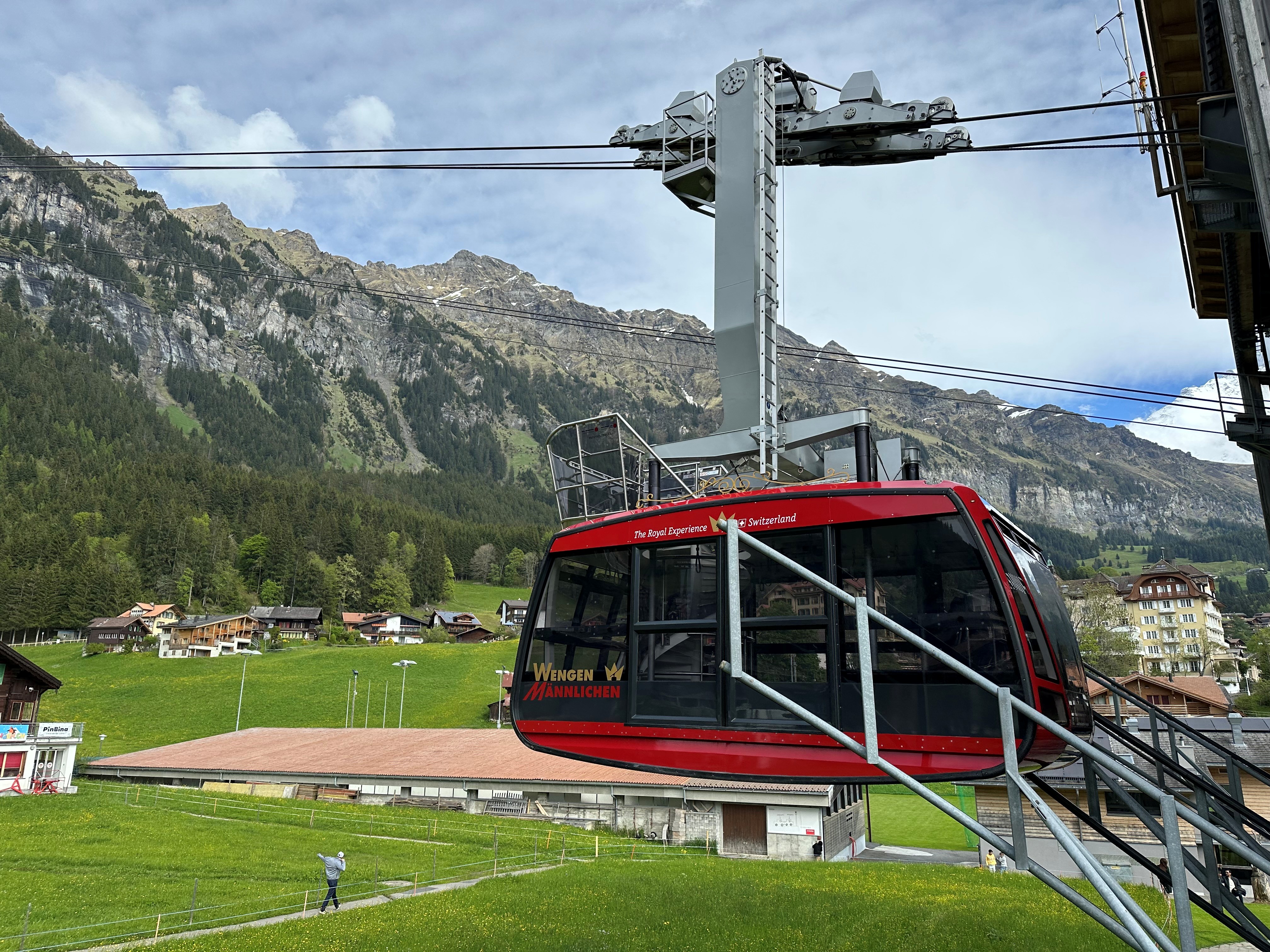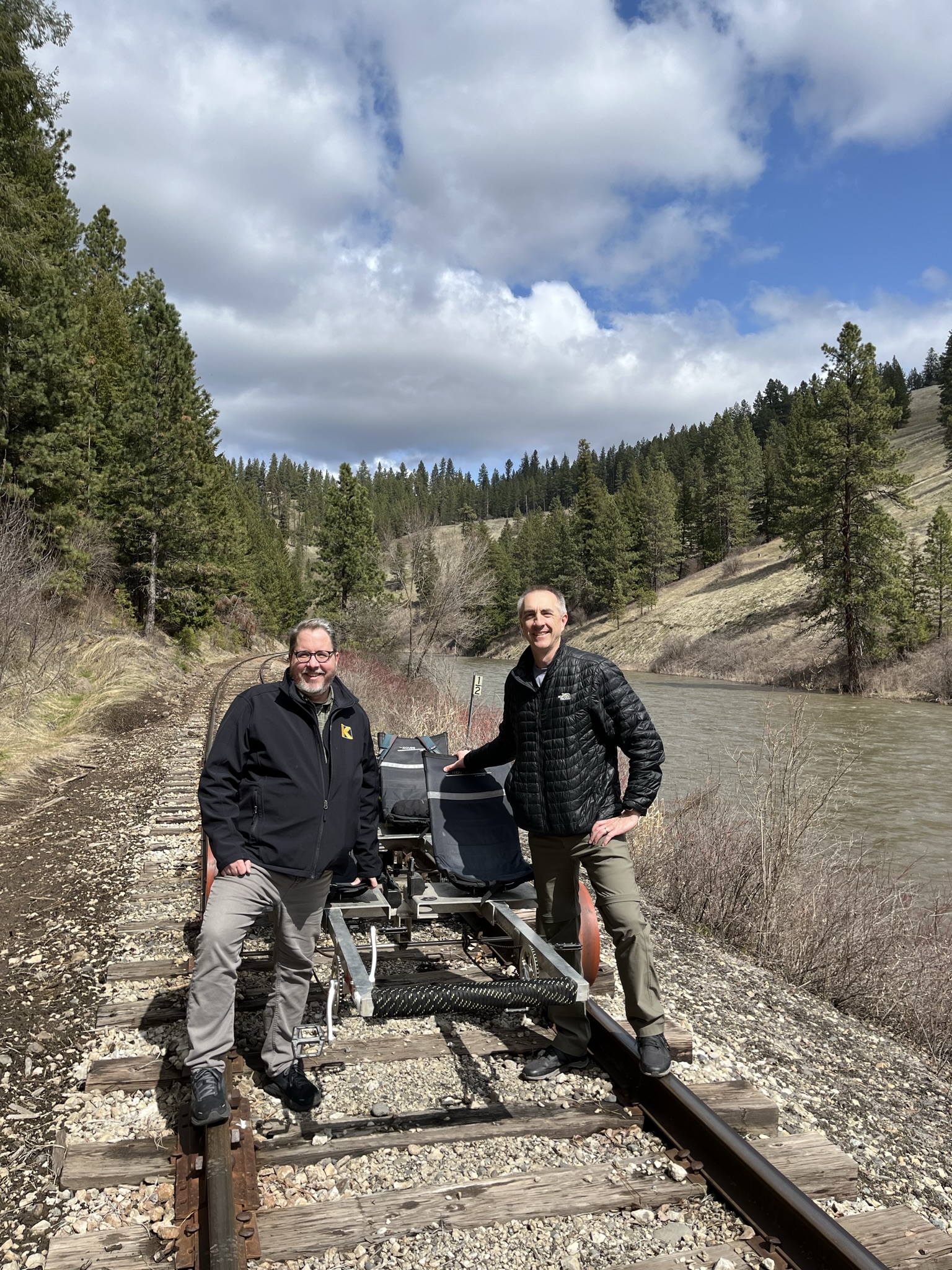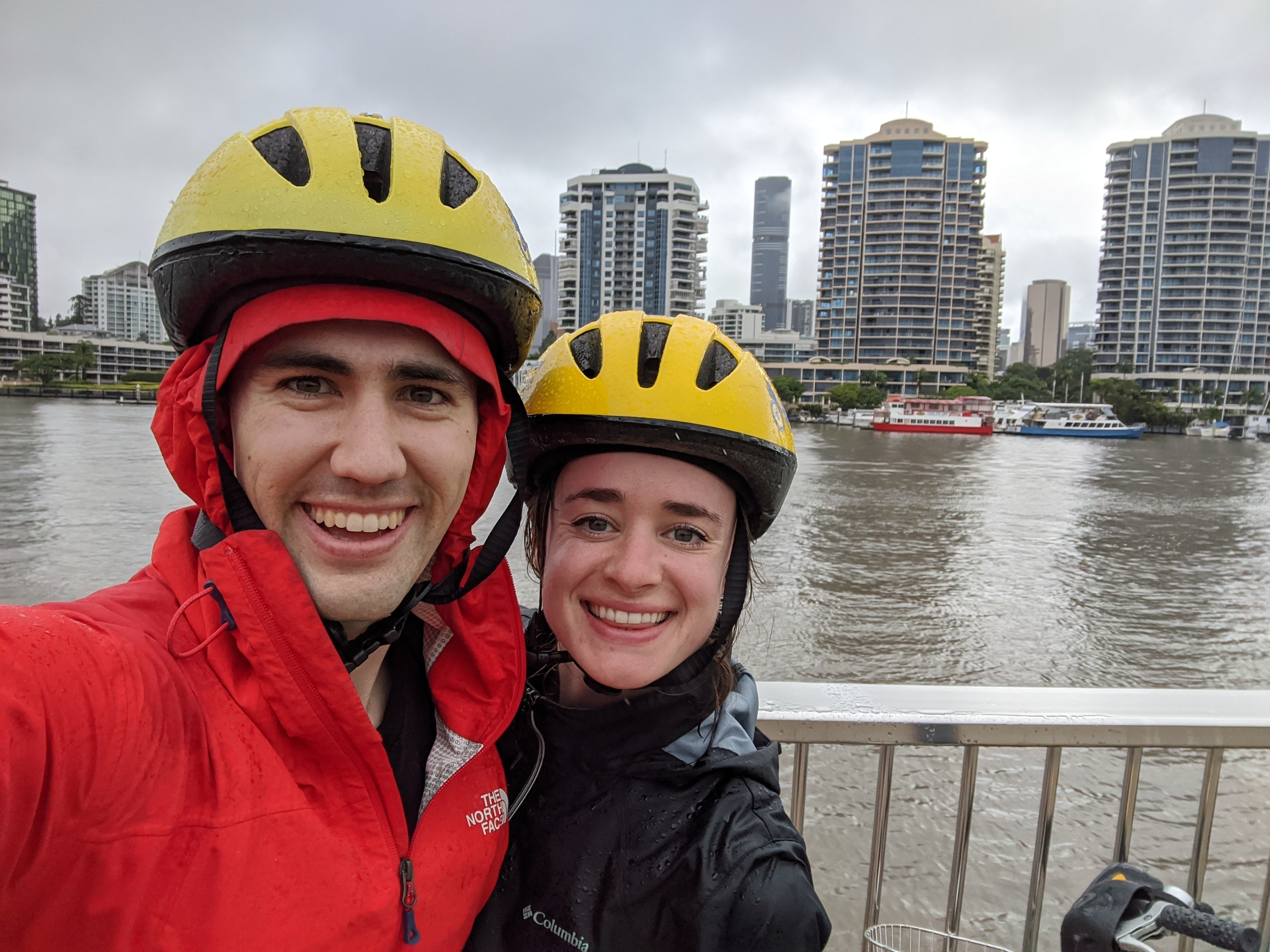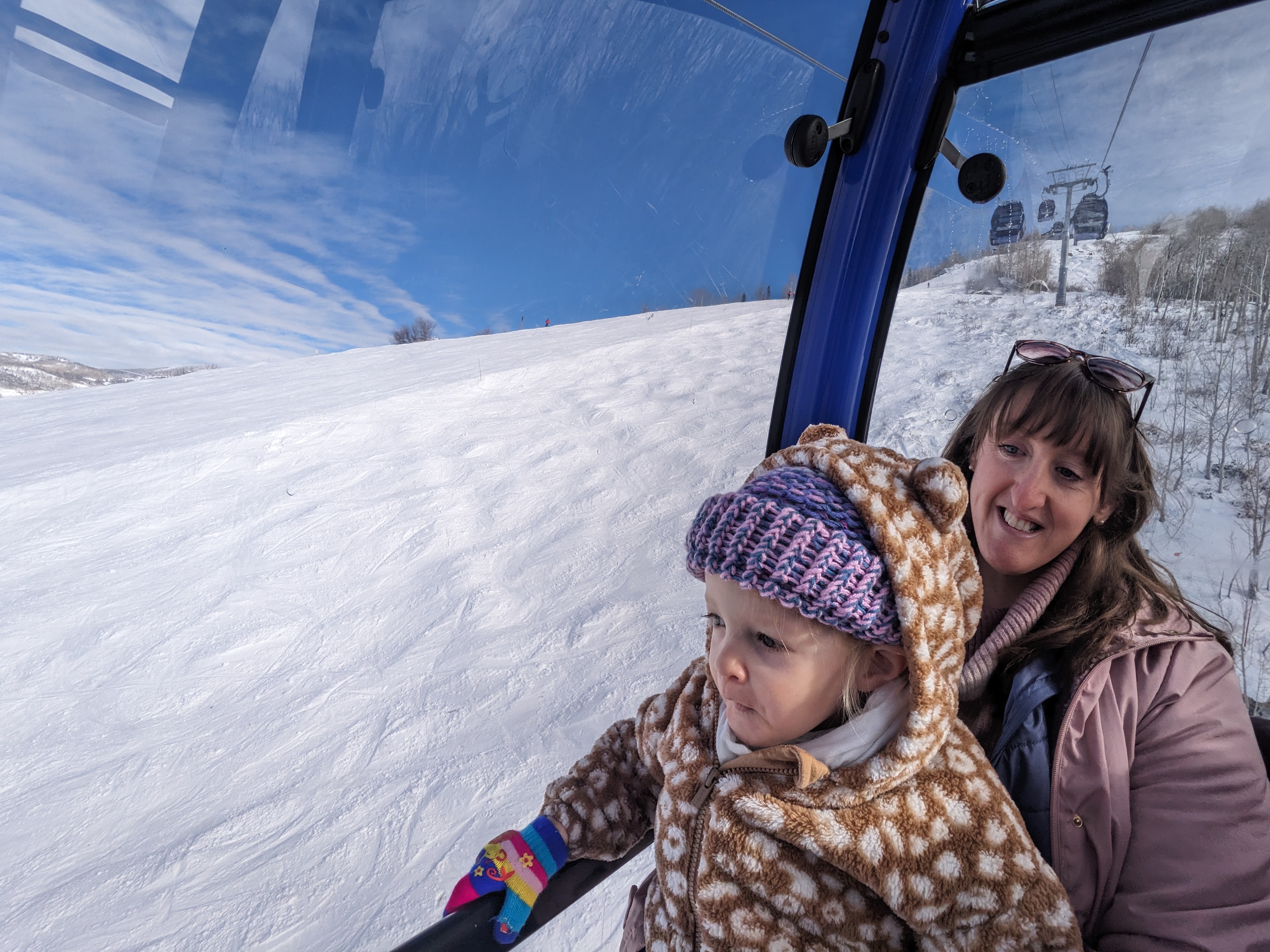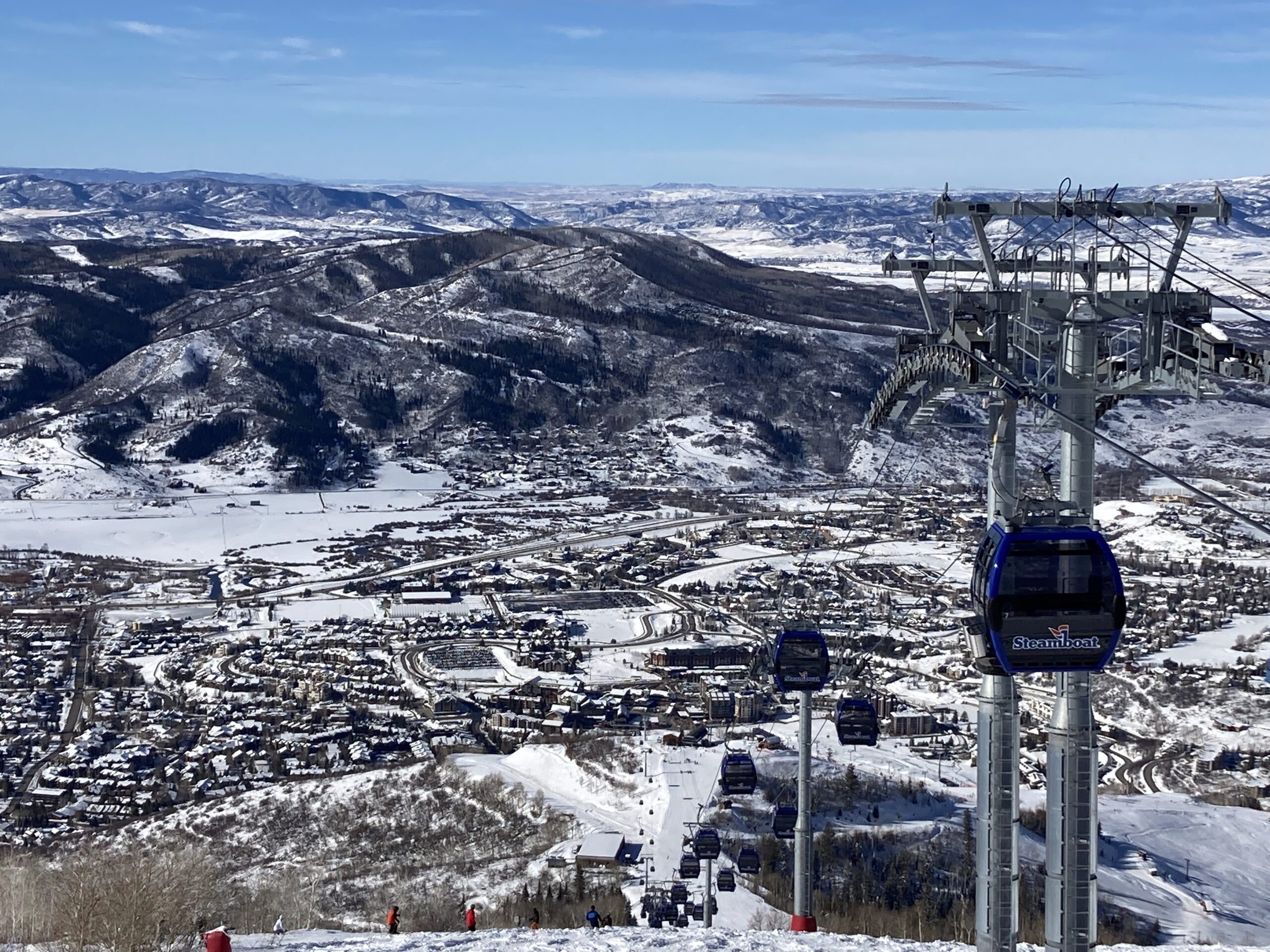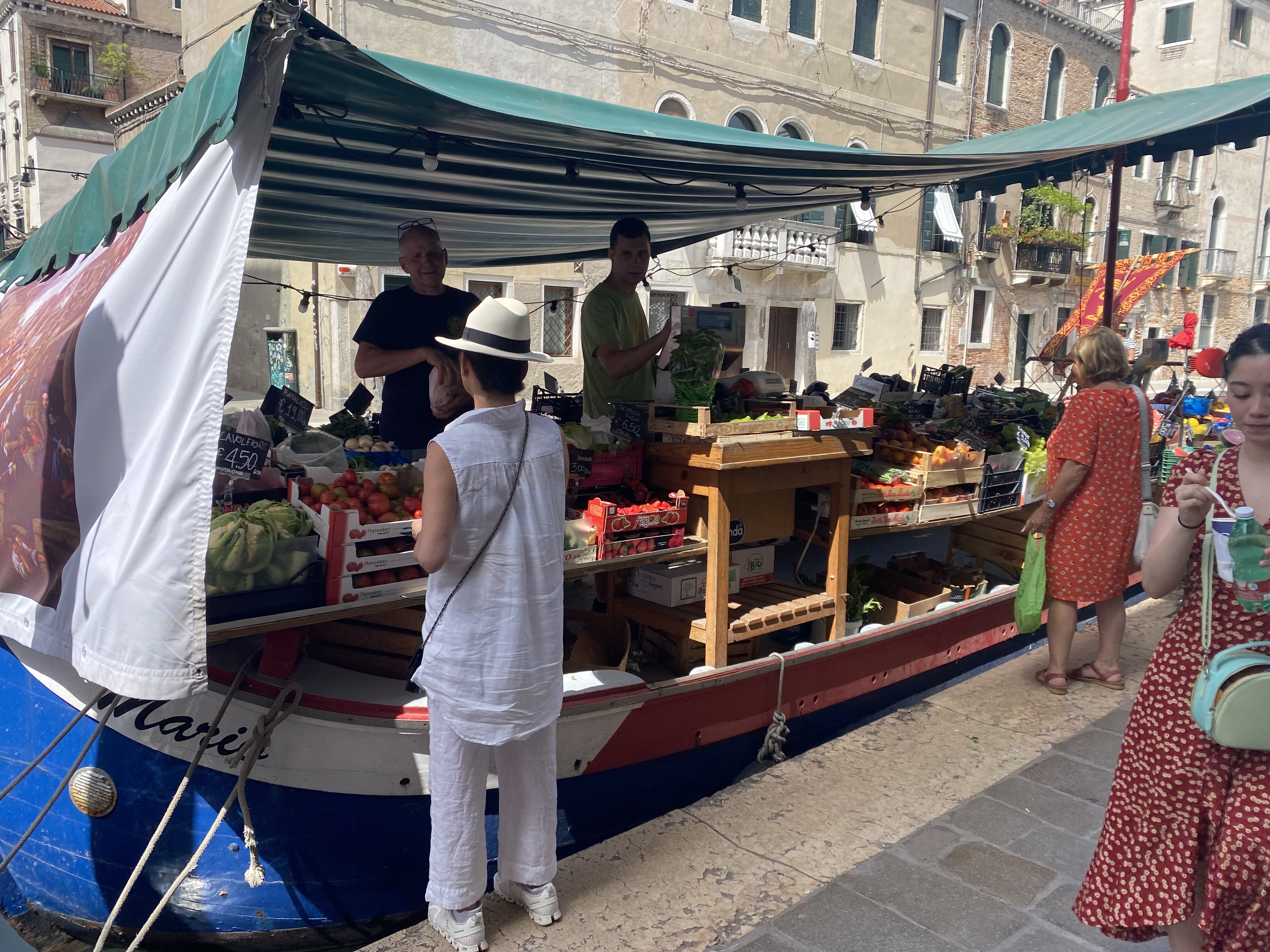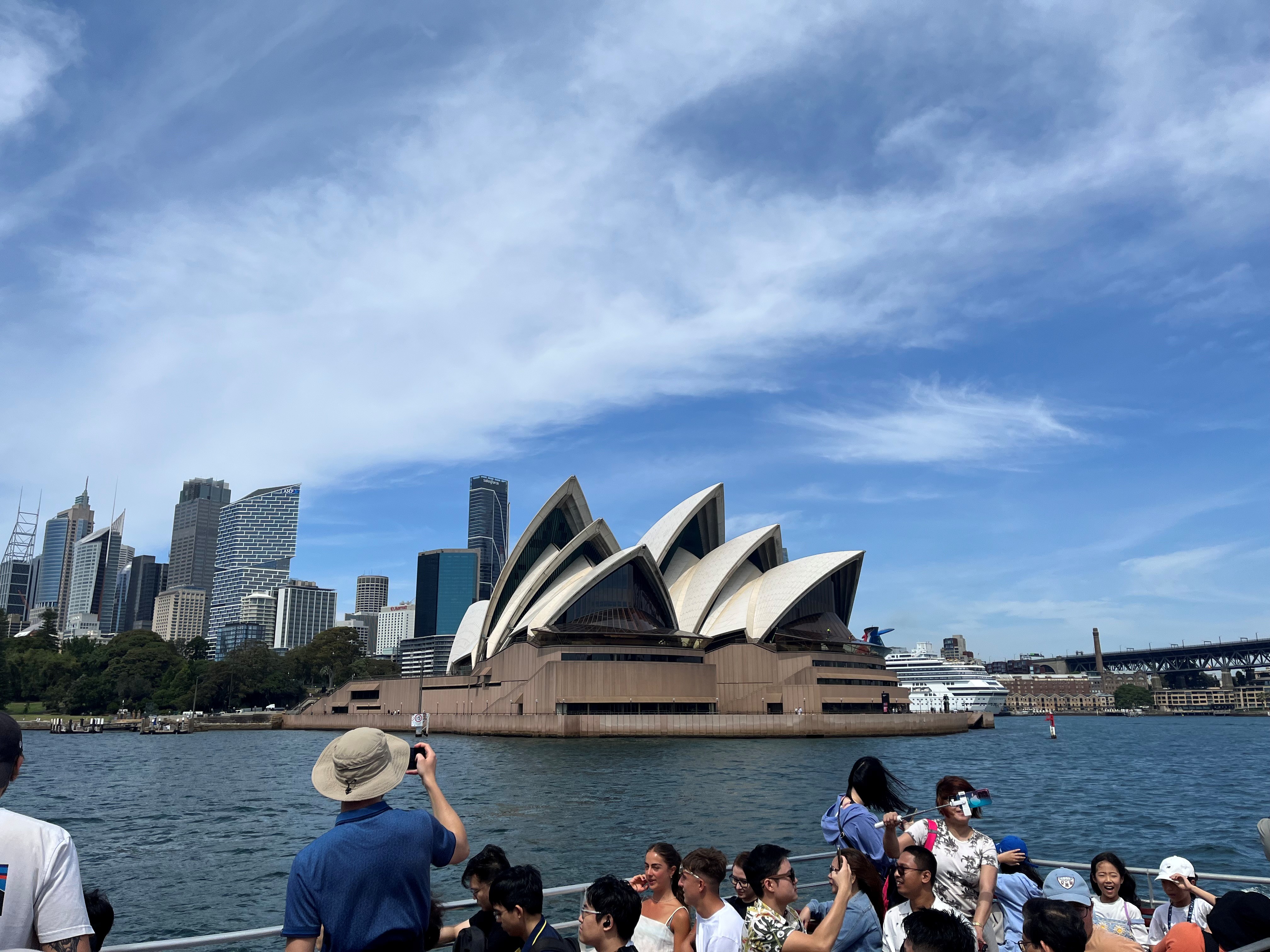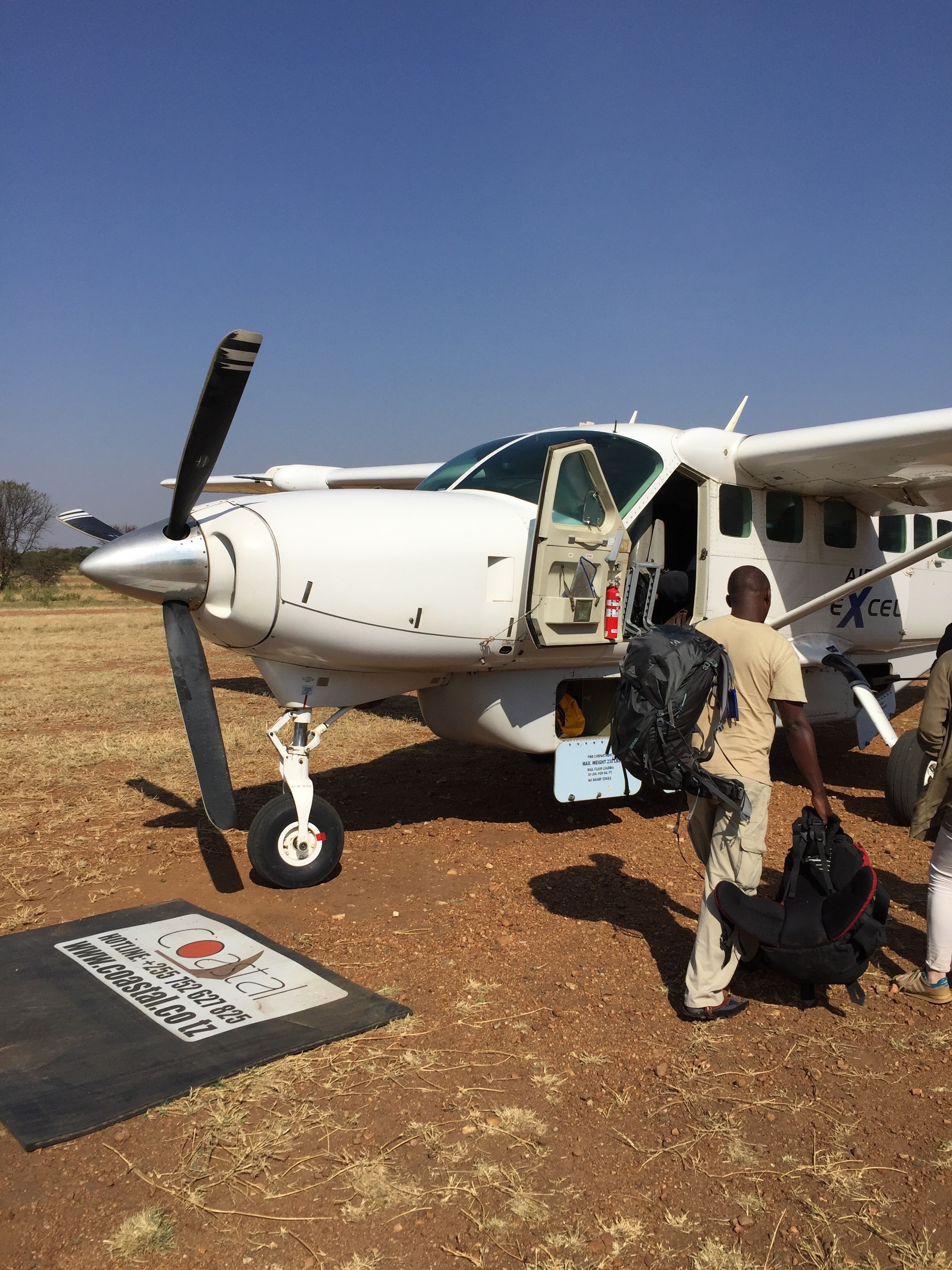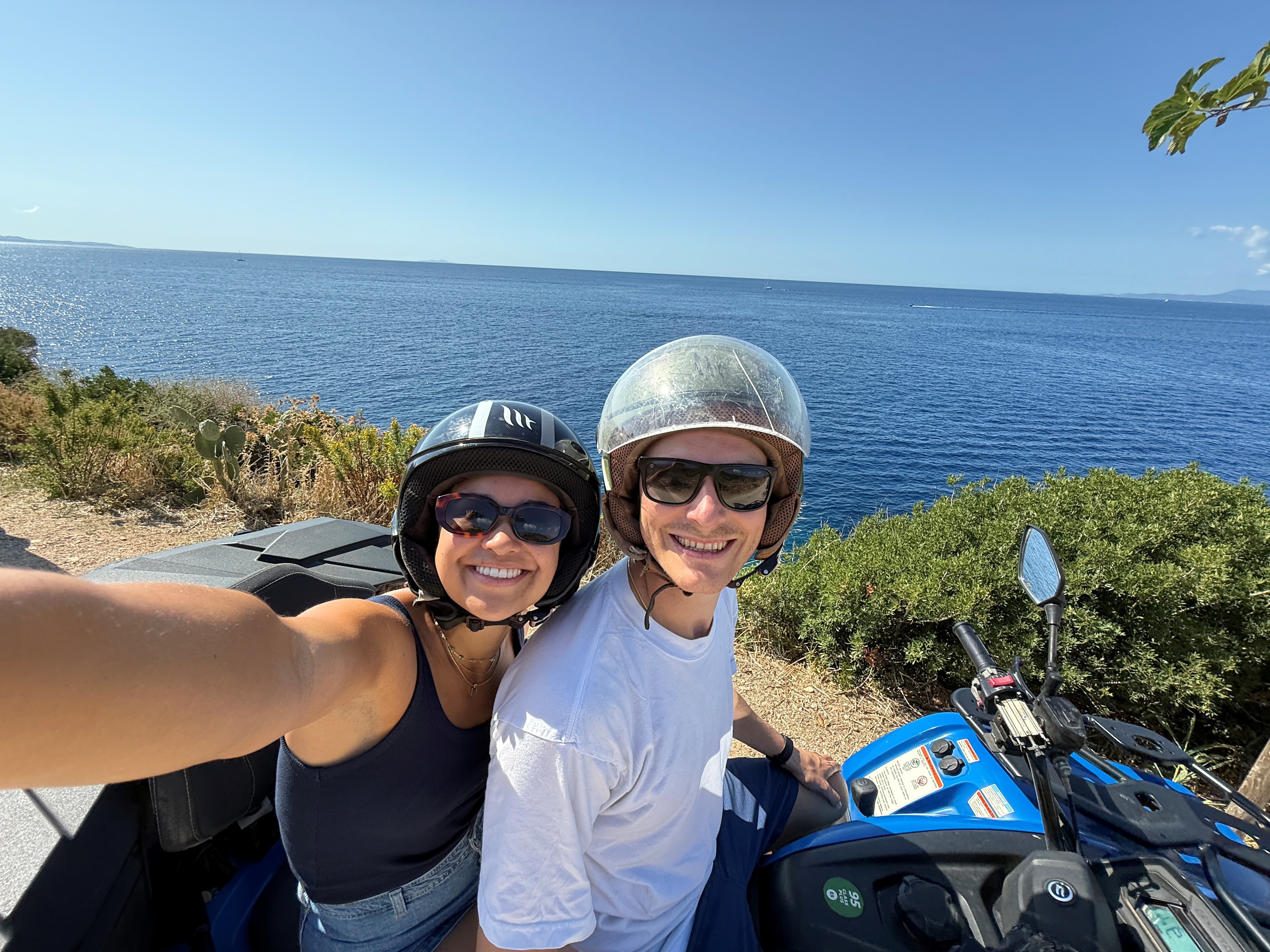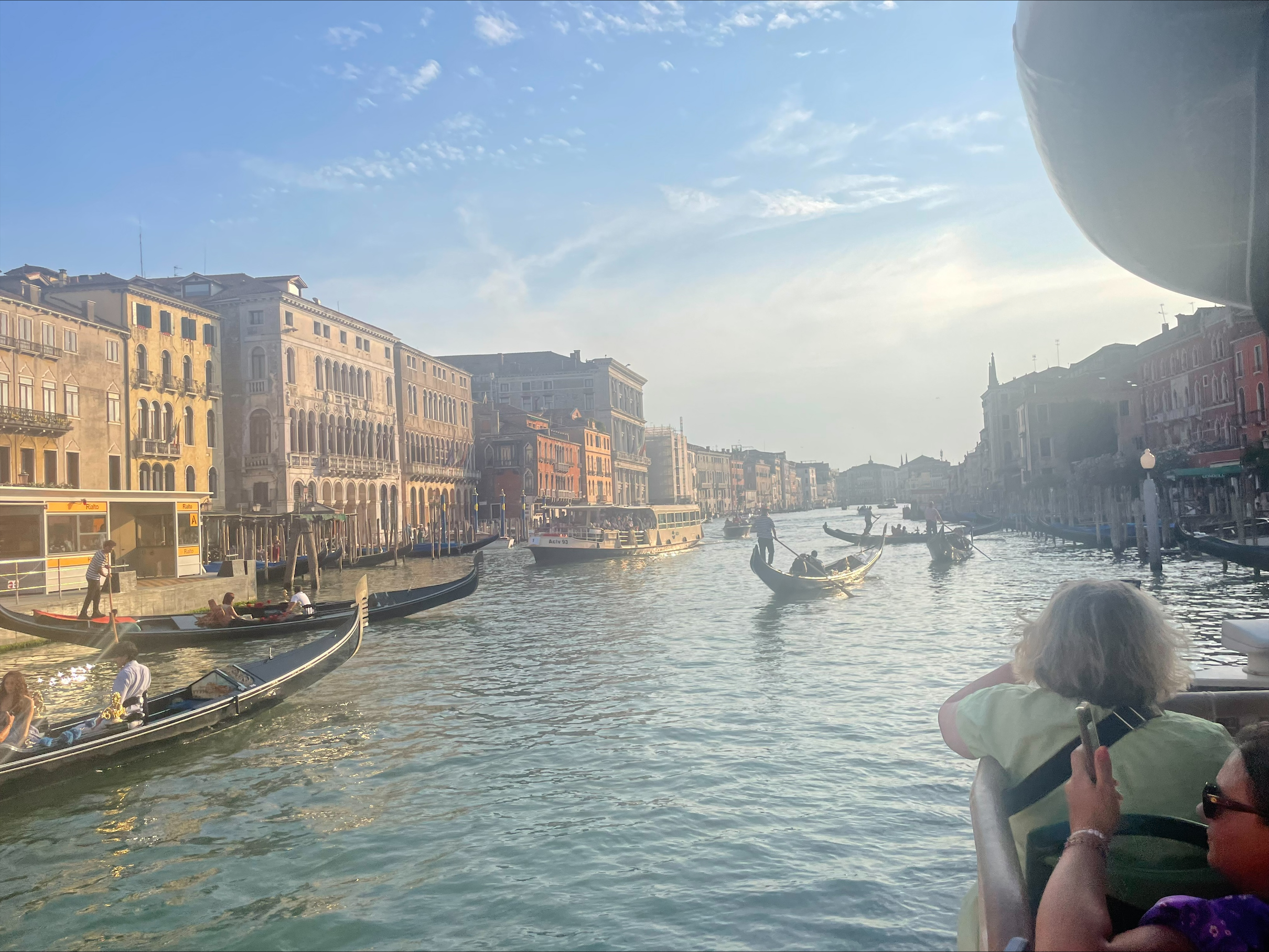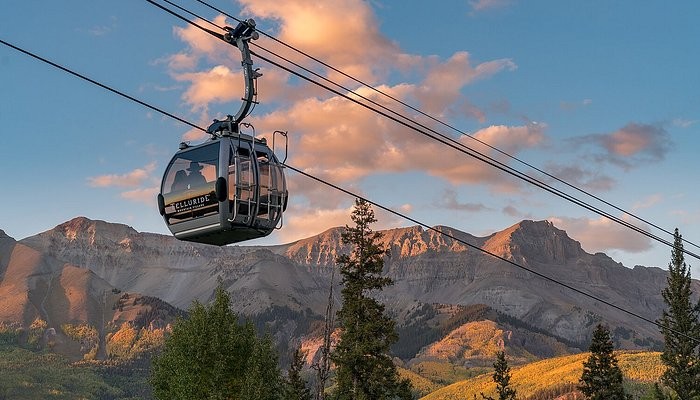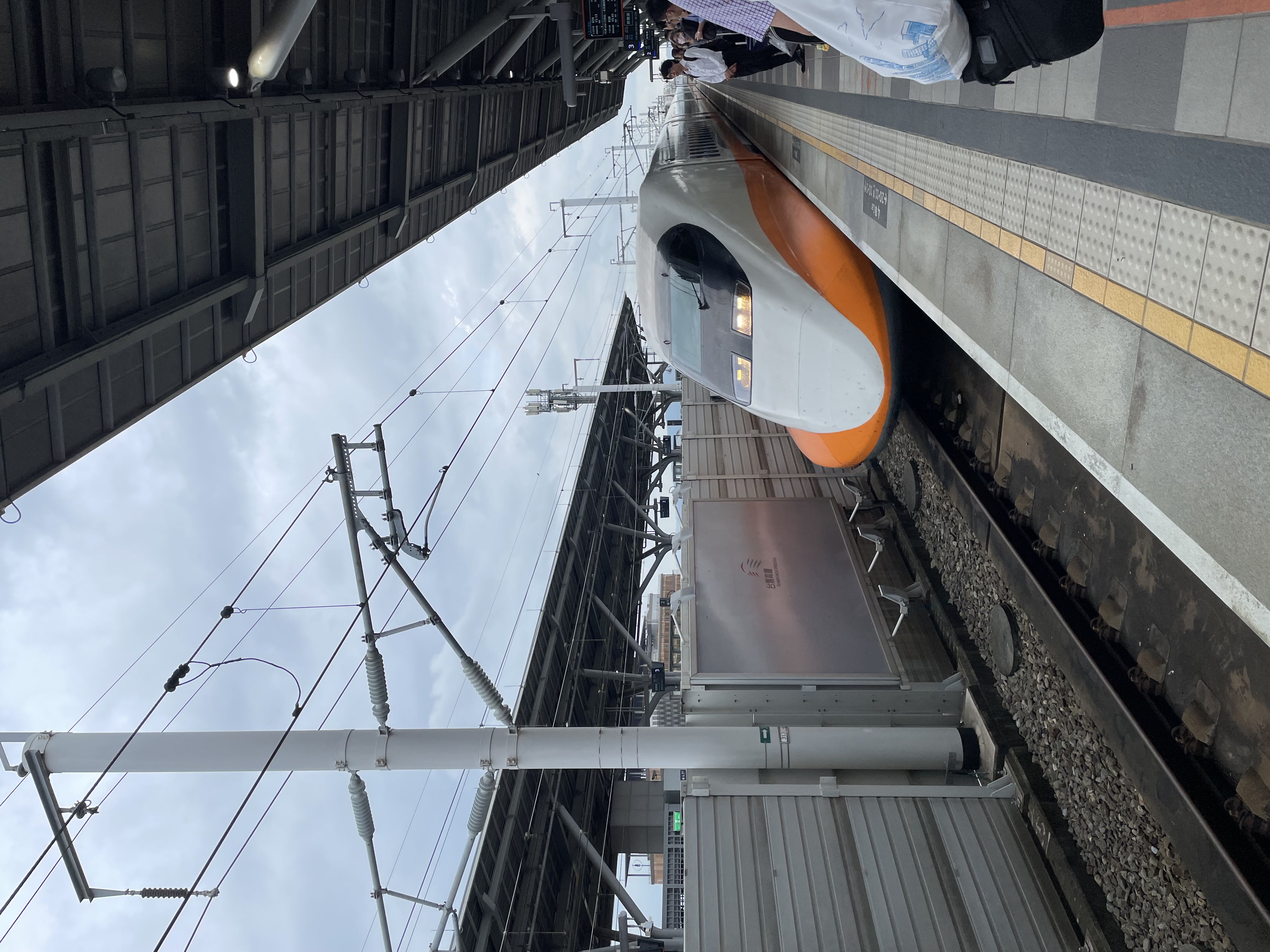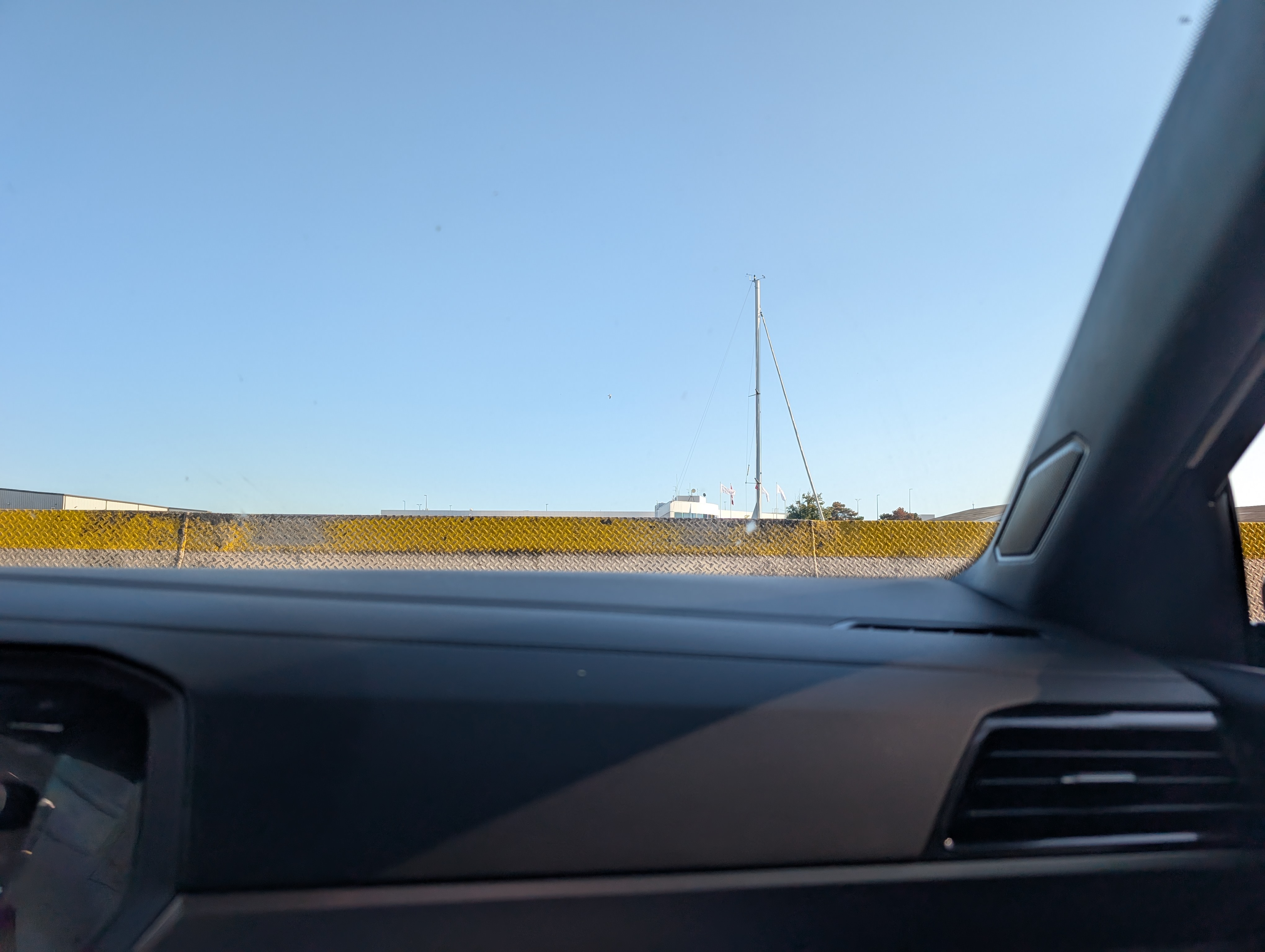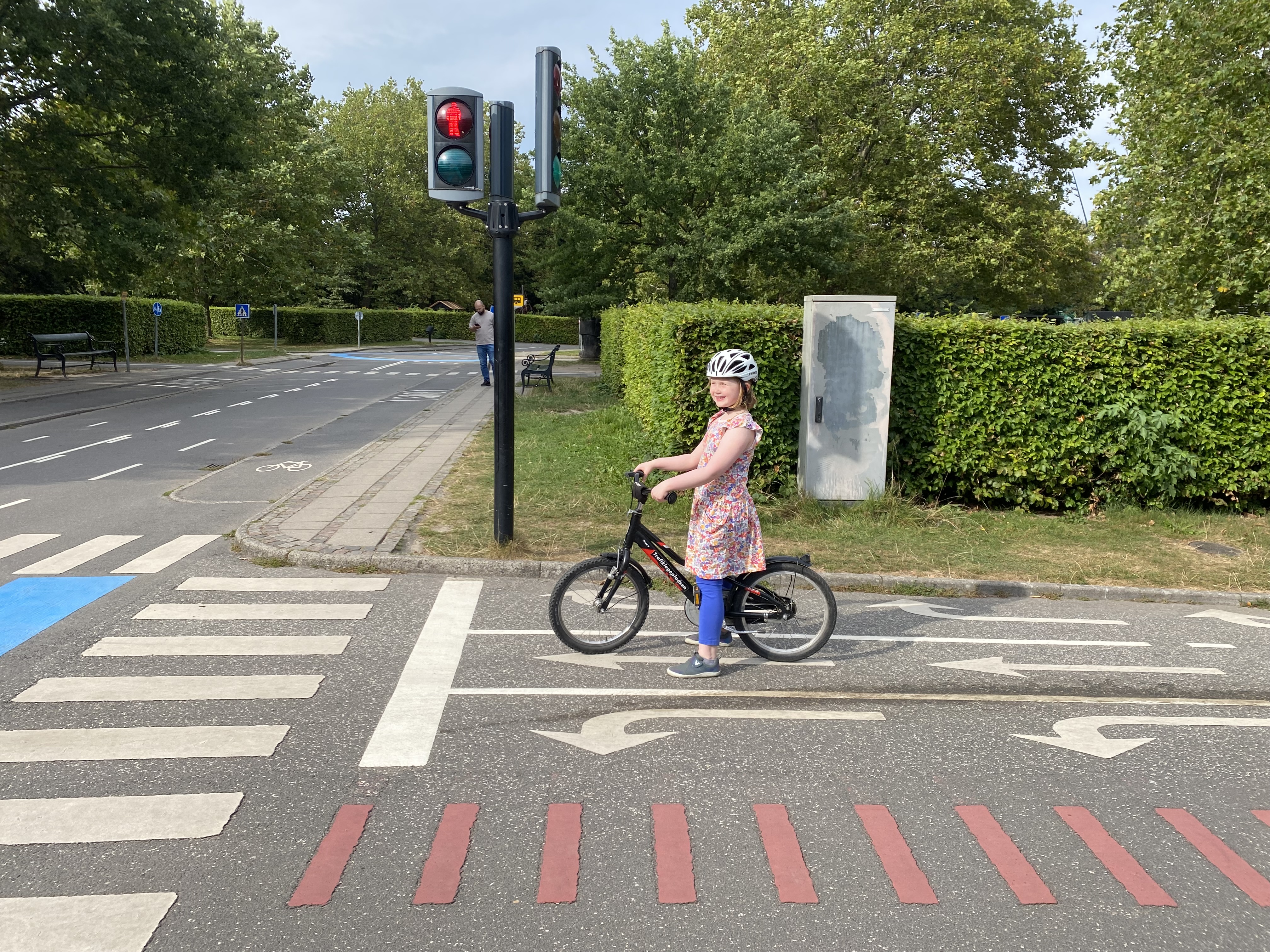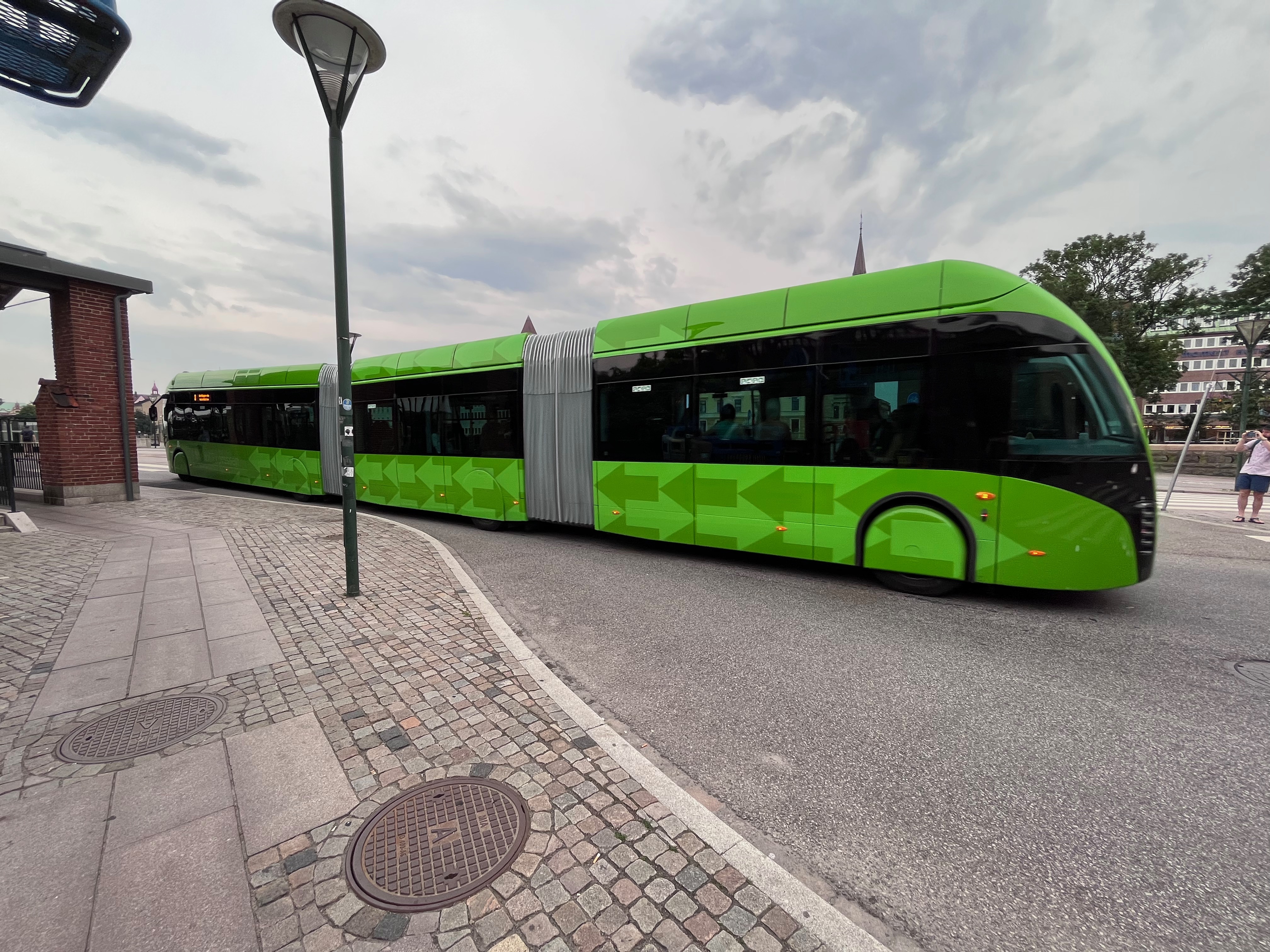November 20, 2025
Here at Kittelson, we’re professionals: when you say “travel,” we think about all of the different modes that have existed throughout time, and how these modes have informed the depth and multiplicity of the transportation-planning practice globally.
But at Kittelson we’re also people. And as people, we love travel for all the reasons you do—the chance to create unforgettable family memories, escape the everyday, and above all, experience a new place. For many of us, travel is even more meaningful because of our personal preoccupations. The next time you’re out exploring, we heartily recommend taking local modes of transit—it’s one of the best ways to discover a new place. Here are some unique transportation options we hope you’ll consider as you plan your upcoming adventures:
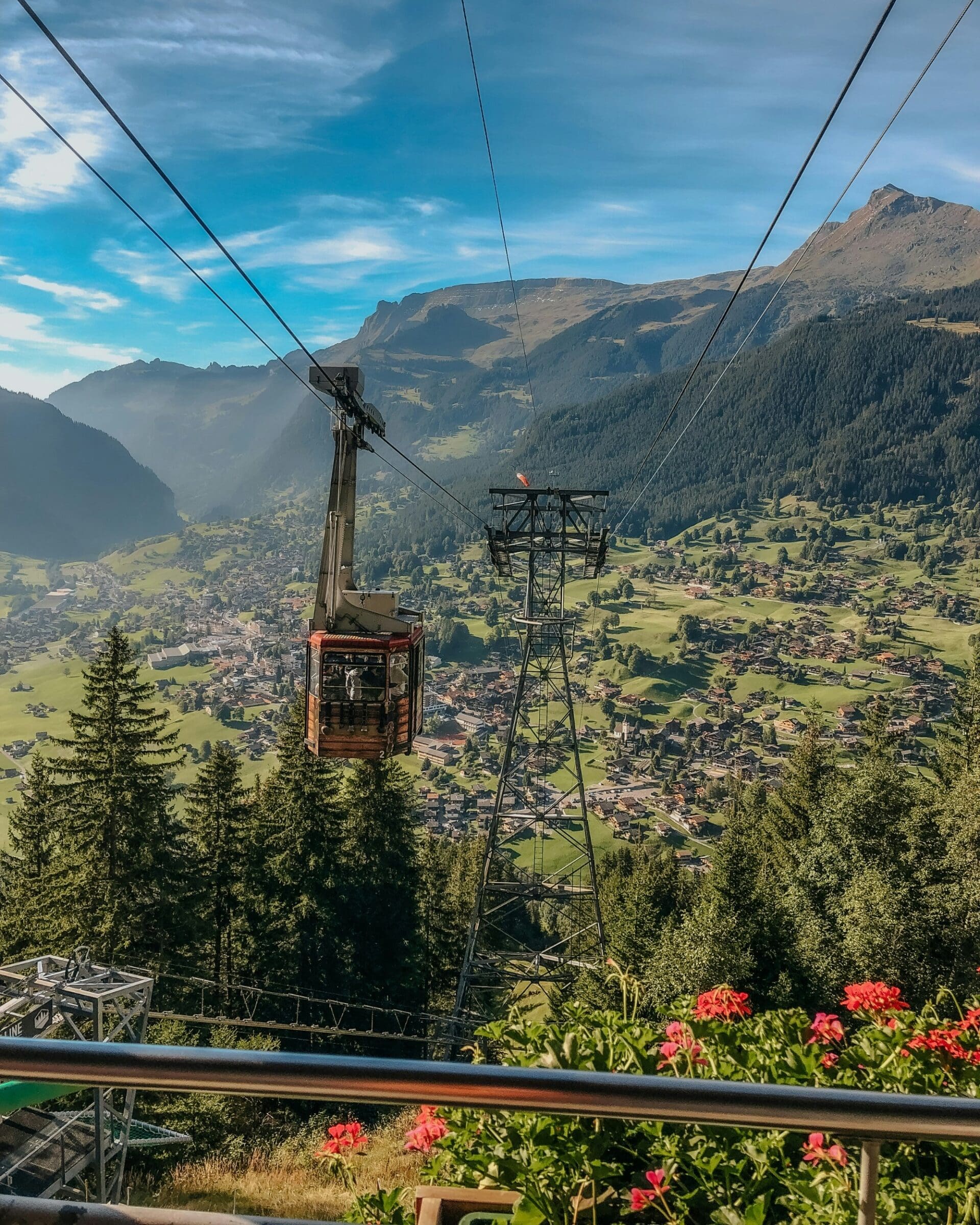
A cable car descends into a Swiss alpine valley. Farmers and tourists alike use these gondolas for trips of all kinds between high fields and low towns. Photo credit: Logan Gouget, Unsplash.
Seilbahnen, Switzerland’s Alpine Cable Cars
Switzerland’s iconic mountain cable cars offer an idyllic way to traverse the country’s dramatic alpine landscapes. Gondolas glide quietly above forests, lakes, and picturesque herds of cows to connect remote villages, ski resorts, and scenic peaks that would otherwise be inaccessible, either on two legs or on four wheels. Swiss cable cars can get you to Europe’s highest mountain station (at 12,740 feet!) in Zermatt or to a panoramic view of more than 600 mountain peaks in Gemsstock. The Titlis Rotair in Engelberg is the world’s first rotating gondola, offering 360-degree views as it ascends to the glacier at over 10,000 feet. The Matterhorn Glacier Ride features cabins with transparent floors so passengers can gaze directly at the alpine splendor below. Many of these aerial cableways operate year-round, serving hikers and sightseers in the summer and skiers and snowboarders in the winter. No rental car? No problem. Many of the stations are accessible by walking, public transit, or even other cable cars.
And Switzerland’s iconic gondolas aren’t just for tourists and skiers. Residents in the Engelberg Valley region use cable cars known as Buiräbähnli (“farmers’ cableways”) for commuting, regular errands, and supply trips. One farmer even uses them to transport his small cows. Facing the high costs associated with building roads in high alpine geographies, farmers increasingly turned to cable cars after the First World War. Today, these cable cars connect communities of farmers, artisans, and visiting hikers, who can take advantage of this high elevation on-demand transportation network.
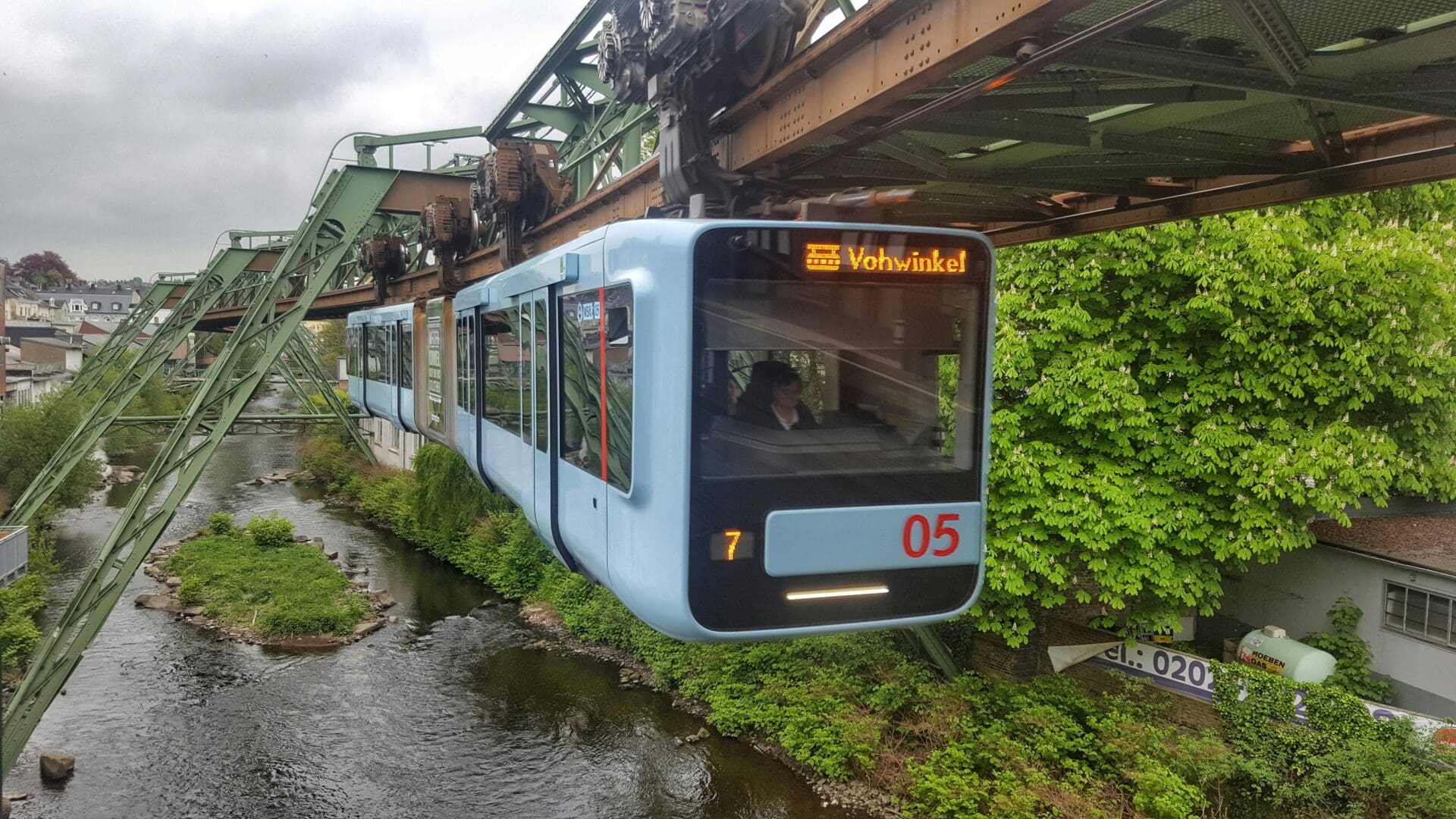
Schwebebahn cars soar over the riverine city of Wuppertal. This unique transit line has been in operation for more than a century. Photo credit: Pavol Svantner, Unsplash.
Die Schwebebahn, Germany’s Suspended Monorail
Whereas Germany’s capital city, Berlin, is known for boasting a plethora of transportation options, a smaller German city far to the west, Wuppertal, is most famous for one signature mode: the Schwebebahn, a floating monorail that runs along, and occasionally above, the Wupper River. With 20 stops along its tracks, the Schwebebahn stretches like a spine through the entire east-west length of the city and provides easy access to Wuppertal landmarks like the zoo, the opera house, and the historic Hauptbahnhof transit station, as well as to various Wuppertal neighborhoods. But the Schwebebahn is more than just a fast, convenient, and singular way to see Wuppertal; it’s an important piece of the city’s history.
In some respects, the Schwebebahn is the reason modern-day Wuppertal exists at all. The monorail tracks were first installed at the turn of the twentieth century and were intended to provide greater connectivity and cooperation between several then-independent cities along the Wupper River, including the cities of Elberfeld, Barmen, Ronsdorf, Cronenberg, and Vohwinkel. The geography of these cities, which adhered closely to the Wupper River and were prevented from growing out in northerly or southerly directions by steep hills and banks, made the linearity of the Schwebebahn a uniquely attractive option. The Schwebebahn was phased into operation starting in 1901, and by 1929 it had achieved its purpose and then some, with the cities becoming so integrated with one another that they merged into a single city, Wuppertal. Just as the area’s geography supported the Schwebebahn, the primacy of the Schwebebahn as the city’s transportation offering has continued to shape Wuppertal in the century since its merger: in a country of gridded cities, Wuppertal remains linear in its shape, meaning there’s no better way to experience all of it than by sticking to the monorail.
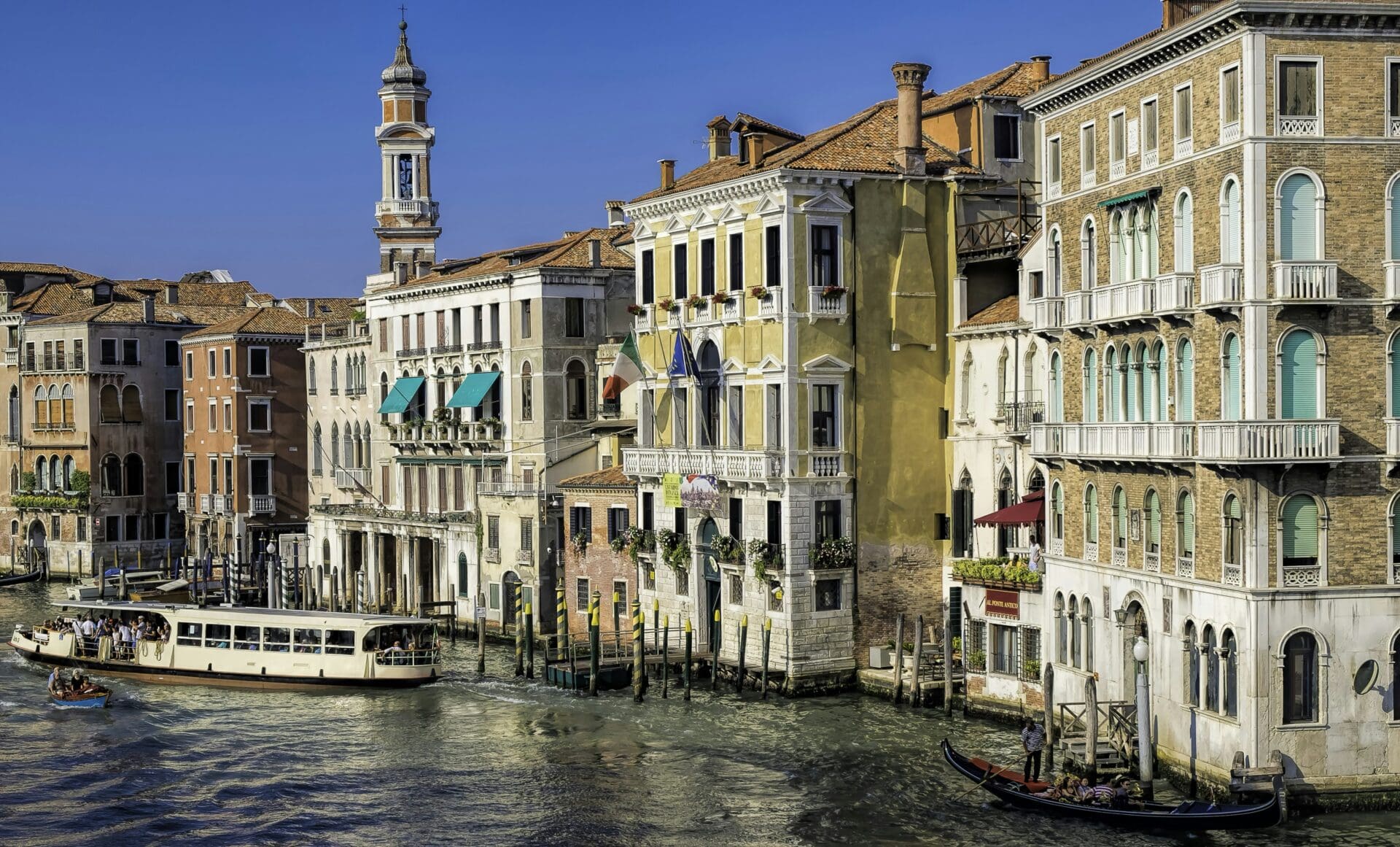
A vaporetto pulls away from a dock in Venice, Italy. The city’s public bus system travels entirely by water. Photo credit: L on Unsplash.
Il Vaporetto, Venice’s Floating Bus
Venice’s unique infrastructure means that travel is never boring. Of course, with a city built on a group of 118 islands that are separated by expanses of open water and by canals, that’s to be expected. But don’t let the complex system of interconnected canals and bridges fool you. Venice, like many cities, relies on buses as a foundational form of transportation. The key difference between the bus in Venice and the bus elsewhere across the world? Venice’s public bus system functions solely on water.
The vaporetto, Venice’s iconic water bus, serves as both an efficient public transport system and one of the most scenic ways to experience the city. Operated by ACTV, these vessels follow numbered routes, just like a traditional bus network. Except, these open-air decks are traveling along the Grand Canal and to the surrounding islands. For example, Line 1 (one of the most popular tourist routes) goes from Piazzale Roma or the railway station to San Marco and onward to the Lido, passing beneath the Rialto Bridge and alongside some of the city’s finest palazzi.
With unobstructed views, the vaporetto offers an authentic cross-section of Venice with residents carrying shopping bags shoulder-to-shoulder with tourists taking in the city in a way that walking alone cannot match.
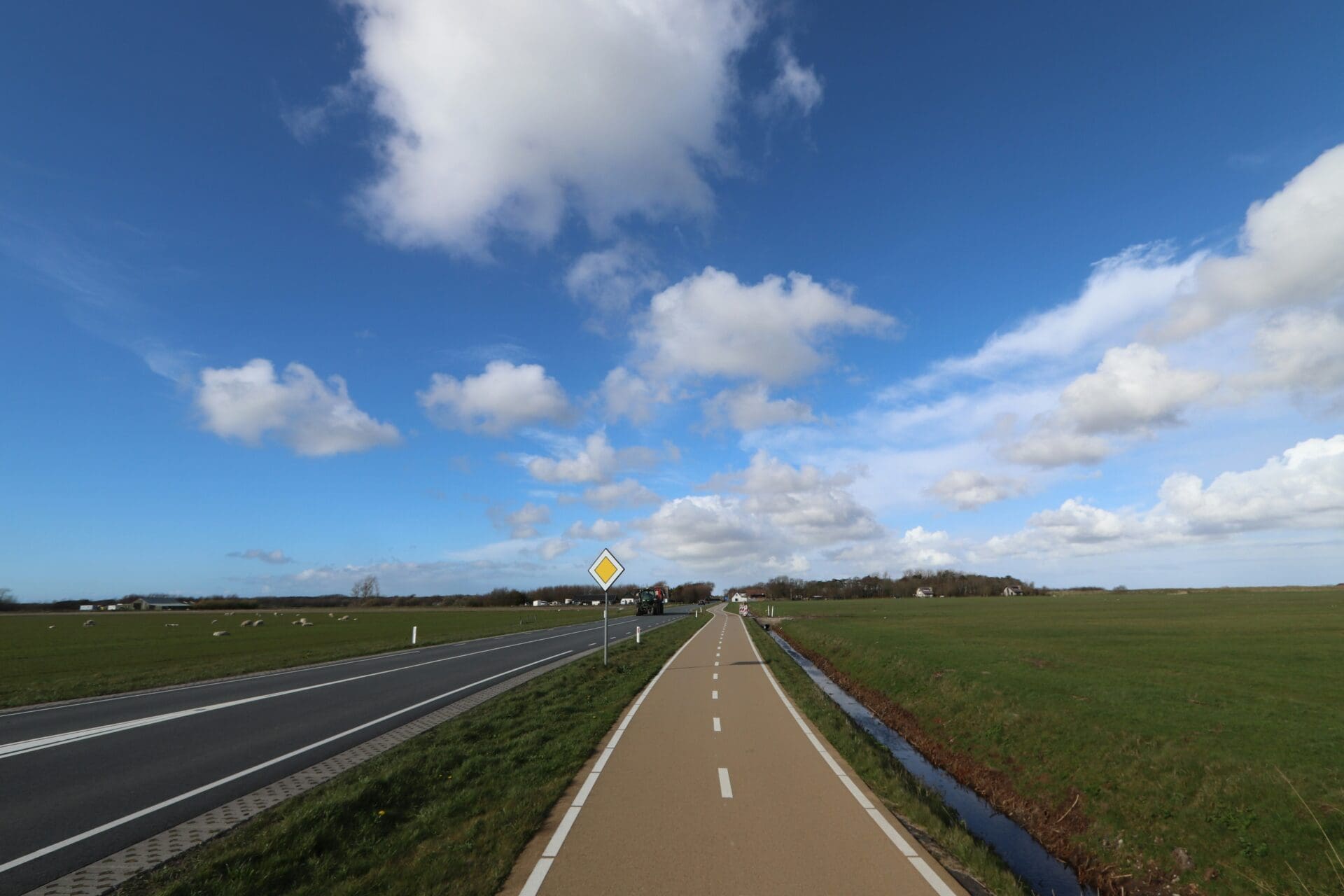
The RijnWaalpad, Netherlands’ famous bike highway, offers a peaceful, uninterrupted commute for bicyclists of all ages and abilities. Julia Taubitz on Unsplash.
Het RijnWaalpad, The Netherlands’ Bike Highway
True to its reputation as the cycling capital of the world, the Netherlands takes bike infrastructure to the next level. The country’s crown jewel is the RijnWaalpad, an 11-mile bike highway that connects the cities of Arnhem and Nijmegen. The route links directly to a railway hub in Arnhem, opening multimodal access to cities beyond via train. Unlike bike paths or lanes that weave through cities’ existing road networks, the RijnWaalpad goes uninterrupted by stoplights or vehicle traffic. Its continuity and separation make it a big win for accessibility, welcoming bikers of all ages and abilities to ride in a safe, low-stress environment. What’s more, much of the highway moves through scenic Dutch countryside, creating both a popular recreational ride and a pleasant yet direct commute.
It’s more than the highway itself that’s been engineered, though; the psychology of it has also been intentionally crafted. Riding on a route solely dedicated to bikes is meant to create a sense of ease, convenience, and comfort that encourages people to choose biking over driving for local and even regional trips. Features like planted flowers and color-changing tunnel lights further enhance a calm experience on the highway. The RijnWaalpad, among the countless other Dutch infrastructure and policy decisions that uplift biking and deter car use, has had profound impacts on emissions reductions and traffic safety. Since its red-asphalt lanes opened up in 2015, we’ve seen more like it appear around the globe. Take Poland’s 2018 Jaworzno Bicycle Highway and the United Arab Emirates Dubai Loop, which is currently under construction. Grab your handlebars—the future of biking is here!

Tuk-tuks wait for passengers in Bangkok, Thailand. Communities throughout Southeast Asia have adapted variations of the motorized rickshaw to their unique sociocultural and geographic needs. Photo credit: Florian Wehde on Unsplash.
รถตุ๊กตุ๊ก, Thailand’s Auto-Rickshaws
One of the most popular ways to get around in Thailand is in the iconic three-wheeled, open-air taxi called a tuk-tuk, likely named onomatopoetically for the distinctive sound of its engine. Its compactness makes it convenient for navigating dense, urban streets and weaving through narrow alleys. But Tuk-tuks are not only practical; they’re a representation of local art and culture, often adorned with bright colors and designs that reflect the city or region in which they operate. The form of the vehicle itself also varies across locations—a tuk-tuk in Bangkok may have LED lights and sound systems to engage the bustling capital city while one in Chiang Mai is larger and sturdier to maintain comfort throughout the area’s steep terrain. Variations of the tuk-tuk can be found throughout Southeast Asia, from the Philippines’ “motorized tricycle” sidecar to Cambodia’s separated passenger cabins driven by motorcycles.
The tuk-tuk was born from the Japanese “auto-rickshaw,” developed after World War II for affordable and adaptable transportation of goods and people. The vehicles soon spread across Asia and diversified as different countries adapted them to their own environments, economies, and cultures. In Thailand, they were first used for cargo but have since become a major attraction for tourists and a symbol of Thai culture. Prior to this wave of auto-rickshaw adaptations, pedal-powered rickshaws dominated the streets of many of these same countries. Called the samlor in Thailand, manual rickshaws are a living piece of the country’s history that are still commonly used in rural regions and in motor-vehicle restricted areas, such as places of worship.
Today, tuk-tuks continue to evolve with changes in fuel and technology: electric tuk-tuks are helping improve air quality and noise pollution, while ride-hail apps and fleets of tuk-tuks rented out to drivers are redefining the way people manage and ride this indispensable mode of transportation.
Why We Go
The above modes only scratch the surface of unique ways to travel while visiting somewhere new. The truth is there are practically as many ways to get around as there are places to go around. These various modes offer keys to the stories, cultures, and people that make places so special. That’s why so many of us at Kittelson, when we’re lucky enough to experience a new place, make a point of experiencing it through a regionally or culturally specific mode. Check out the photo carousel below to see some of the ways we’ve toured the world!




